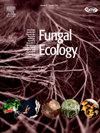Trophic state and phytoplankton composition shape lake mycoplankton diversity
IF 2.2
3区 环境科学与生态学
Q3 ECOLOGY
引用次数: 0
Abstract
Aquatic fungi play key roles in organic matter decomposition and nutrient cycling, but the effects of lake conditions and food web interactions on fungal diversity are still largely unknown. Our study is the first to assess mycoplankton along a broad lake trophic gradient based on total phosphorus (TP) (2-2500 μg/L) using DNA metabarcoding data from 369 Canadian lakes. Zoosporic fungi, Chytridiomycota in particular, dominated mycoplankton assemblages. Mycoplankton diversity declined ∼15 % along the trophic gradient. Community composition varied the most between oligotrophic and hypereutrophic lakes, with pH, TP and water temperature as main drivers. Notably, mycoplankton communities showed stronger correlations with eukaryotic phytoplankton than with physicochemical variables, underlining the importance of phytoplankton hosts and substrates. Chytrid taxa associated with Chrysophyta in acidic lakes differed from those associated with Chlorophyta and Cryptophyta in lakes within agricultural lands. Overall, our study highlights the essential role of phytoplankton in shaping mycoplankton diversity and communities.
营养状态和浮游植物组成决定了湖泊浮游真菌的多样性
水生真菌在有机物分解和养分循环中发挥着关键作用,但湖泊条件和食物网相互作用对真菌多样性的影响仍是未知的。我们的研究首次利用来自加拿大369个湖泊的DNA元条形码数据,基于总磷(TP) (2-2500 μg/L),评估了沿宽湖泊营养梯度的浮游真菌。游动孢子真菌,特别是壶菌科,主导了浮游真菌组合。浮游真菌多样性沿营养梯度下降约15%。群落组成在贫营养化湖泊和富营养化湖泊之间变化最大,pH、TP和水温是主要驱动因素。值得注意的是,浮游真菌群落与真核浮游植物的相关性强于与物理化学变量的相关性,强调了浮游植物宿主和底物的重要性。酸性湖泊中与绿藻相关的壶菌类群与农田内湖泊中与绿藻和隐藻相关的壶菌类群存在差异。总的来说,我们的研究强调了浮游植物在塑造浮游生物多样性和群落中的重要作用。
本文章由计算机程序翻译,如有差异,请以英文原文为准。
求助全文
约1分钟内获得全文
求助全文
来源期刊

Fungal Ecology
环境科学-生态学
CiteScore
5.80
自引率
3.40%
发文量
51
审稿时长
3 months
期刊介绍:
Fungal Ecology publishes investigations into all aspects of fungal ecology, including the following (not exclusive): population dynamics; adaptation; evolution; role in ecosystem functioning, nutrient cycling, decomposition, carbon allocation; ecophysiology; intra- and inter-specific mycelial interactions, fungus-plant (pathogens, mycorrhizas, lichens, endophytes), fungus-invertebrate and fungus-microbe interaction; genomics and (evolutionary) genetics; conservation and biodiversity; remote sensing; bioremediation and biodegradation; quantitative and computational aspects - modelling, indicators, complexity, informatics. The usual prerequisites for publication will be originality, clarity, and significance as relevant to a better understanding of the ecology of fungi.
 求助内容:
求助内容: 应助结果提醒方式:
应助结果提醒方式:


